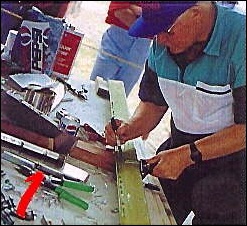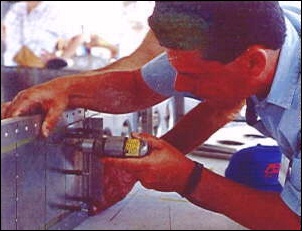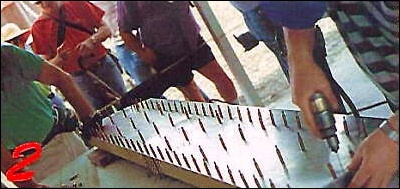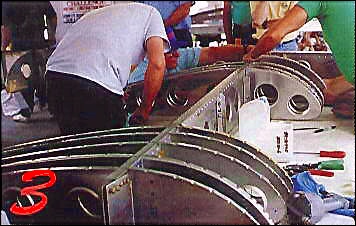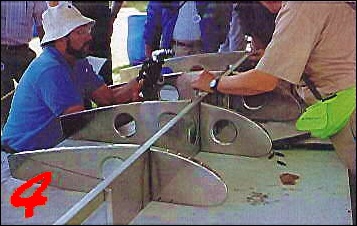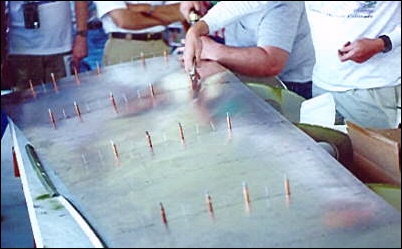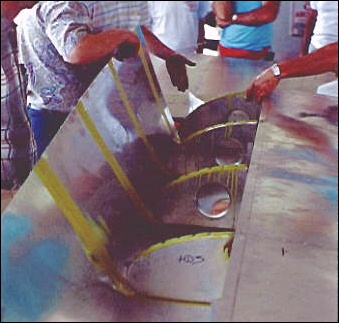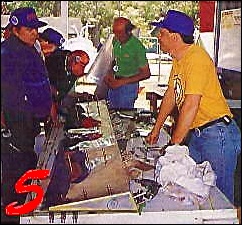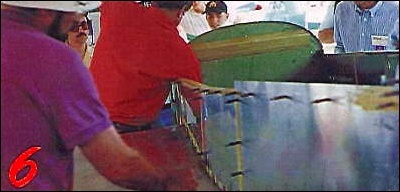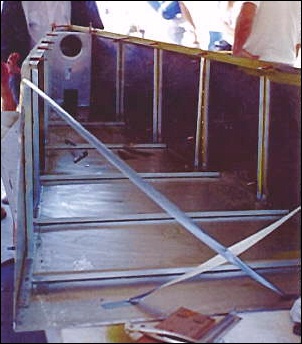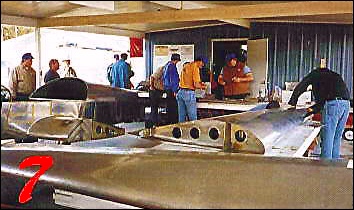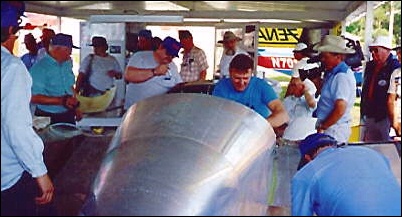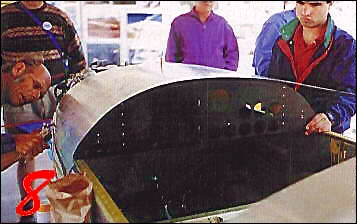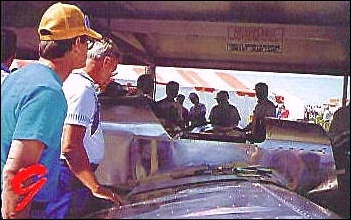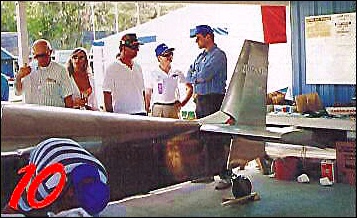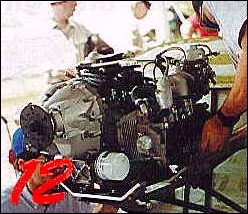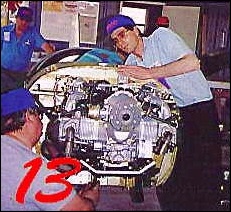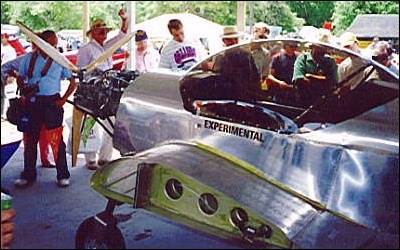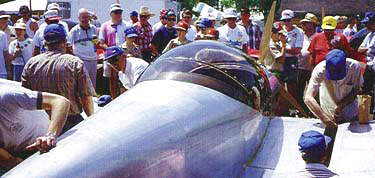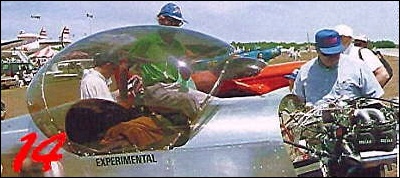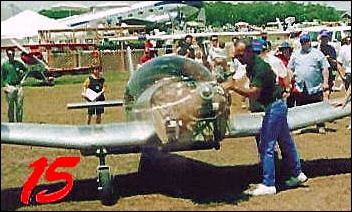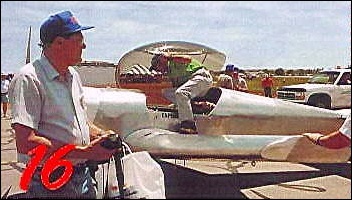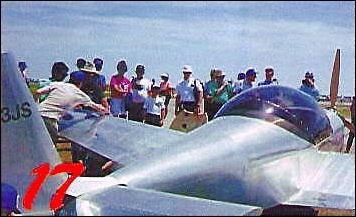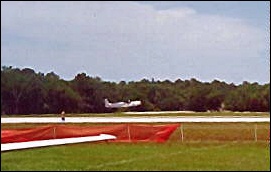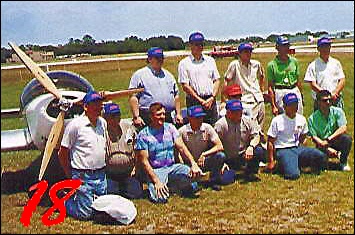'SEVEN DAY WONDER'
ZODIAC AT SUN'N FUN FLY-IN
BUILDING &
FLYING AN AIRCRAFT IN ONE WEEK!
At the EAA Sun'n Fun fly-in (Lakeland, Florida) during the
week of April 18 - 24, 1993, aviation enthusiasts saw a complete airplane built, and
flown, within a period of just seven days!
Kit manufacturer Zenith Aircraft Company supplied a
complete kit and oversaw assembly of a complete Super ZODIAC CH 601 HDS aircraft at the
convention's sheet-metal workshop during the fly-in.
Visitors to the fly-in were able to see an aircraft come
together before their very own eyes as staff and volunteers rushed to build and finish an
aircraft in a week!
Assembly of the off-the-shelf kit started on Sunday, April
18, and continued through to the following Saturday, when the completed ZODIAC aircraft
was flown on its maiden flight during the final airshow of the one-week fly-in. Chris
Heintz, the aircraft's designer, had the honor of test flying the newly-built plane.
Zenith Aircraft staff volunteered their time in leading the assembly project, with the help of
local volunteers.
The Super ZODIAC CH 601, an all-metal kit aircraft designed
by aeronautical engineer Chris Heintz, was chosen for this challenging project primarily
because it is easy to build, utilizing a simple and proven all-metal assembly process.
Building the ZODIAC kit required only basic tools, and did
not call for jigs or special skills, making kit assembly quick and relatively easy. The
metal parts that made up the kit are pre-formed at the Zenith Aircraft factory, ready for
assembly. The ZODIAC aircraft was equipped with the 80-HP Rotax 912 engine and a basic
factory panel. With the 80 horse-power engine, the sleek two-seater cruised at a brisk
135-MPH, burning less than four gallons per hour.
Having already successfully completed similar projects in
the past, the kit company was confident that the aircraft would be ready to fly at the end
of the week: In 1978, another Heintz design, the Zenith CH 200, was built in seven days at
the Oshkosh Fly-In, and several STOL CH 701's have been assembled and flown at previous
Sun'n Fun fly-ins, being awarded the show's "Best Workshop" by Sport Pilot
magazine (1990). At the 1988 World's Fair in Vancouver, a complete ZODIAC was built in
twelve days.
The educational project was an excellent opportunity for
first-time builders and aviation enthusiasts to learn all about building and flying their
own aircraft - by following the assembly of a complete aircraft in just one week. Designer
Chris Heintz was on hand all week to explain the Zodiac's design and construction and to
oversee assembly of the "seven day wonder".
Why does Zenith Aircraft sponsor "Seven Day
Wonder" construction projects?
Chris Heintz explained: "We started it as a challenge: To prove that it
could be done. Also, I think the construction project fills a void at the fly-in
conventions - where there are only completed aircraft to see. This project shows visitors
that it is possible to build an aircraft without special skills or tools, and allows them
to follow the full construction of an aircraft during a single week - from start to
finish."
"Building aircraft is what EAA [the Experimental
Aircraft Association] is about - and this type of project shows the average fly-in visitor
that he or she can build their own aircraft!" Explained Heintz. "While
we all love to look at finished aircraft, one has to realize what is involved in getting
the aircraft to its finished state.
"Obviously, the project is also an excellent
promotional tool. It proves how quick and easy our kits are to assemble, and validates my
claims about my designs' construction simplicity. I'm somewhat surprised that no other
manufacturers have attempted a similar project, but maybe they're not as confident about
being able to finish one of their kits within a week.
"We don't attempt a 'Seven Day Wonder' project
every year: First, we've proven that it can be done, and it's also a lot of work to
organize. When we're not doing one of these projects, we like to spend time at the
workshop showing potential builders some of the basics in metal construction. During a
seven-day project, I can't spend too much time talking with visitors - we have to
concentrate on getting the project completed."
[Back]
[ZODIAC CH 601]
